SOUTH DAKOTA SOYBE A N LEADER
2023 Summer Check-In
New App Creates Soil Health Social Network

A Journey to No-Till Cover Crops
SD Roots Shine Bright at Bali Green School
From the Farm Field to the Ball Field
Eight Billion People Need A Lot of Protein
How are Soybean Production and Sustainability Aligned in South Dakota?


Summer Issue 2023
A publication of the South Dakota
Soybean Association
REMEMBER, HE CREATED YOU FOR THIS.
Don’t be afraid. Just believe. Mark 5:36

President
Kevin Deinert, Mount Vernon
First Vice President
Chad Schooley, Castlewood
Second Vice President
Jeff Thompson, Colton
Secretary
Drew Peterson, Salem
Treasurer
Brent Greenway, Mitchell
Directors
Chad Nelsen, Viborg
Chad Schooley, Castlewood
Derrick Scott, Geddes
John Horter, Andover
Jamie Johnson, Frankfort Jesse King, Toronto
ASA Corteva Young Leaders
21-22 Tanner Hento, Avon
22-23 Jeff Kloucek, Tabor

Industry Representatives
Kari Vander Wal, South Dakota Soybean Processors
Joe Schefers, Bayer Crop Science
Terry Schultz, Mustang Seeds
Travis Bunde, Raven Industries
Jeff Behrens, Pioneer
American Soybean Association
Brandon Wipf, Huron
Jordan Scott, Valley Springs
Editor/Design Director
Mariah Kessler, SD Soybean Communications Director
South Dakota Soybean Leader is published four times a year by the South Dakota Soybean Association, 5000 S. Broadband Lane, Suite 100, Sioux Falls, SD 57108 Phone: 605-330-9942. For address corrections contact South Dakota Soybean Leader at 5000 S. Broadband Lane, Suite 100, Sioux Falls, SD 57108. www.sdsoybean.org | sdsa@sdsoybean.org
Comments and statewide news articles should be sent to the above address. Advertising space reservations must be made by the first of the month preceding publication. In consideration of the acceptance of advertisement, the agency and the advertiser must, in respect of the contents of the advertisement, indemnify and save the publisher harmless against any expense arising from claims or actions against the publisher because of the publication of the content of the advertisement.
Advertising Inquiries
Garrett Gross, AGE Media (605) 251-6370 | garrett@agemedia.pub www.agemedia.pub
BACK IN THE SADDLE
By Kevin Deinert, President of the South Dakota Soybean Association
It is that time of year again! That time where all of us in the farming community get to shake off that winter feeling and get back into the saddle of the new crop year. There is nothing better than getting back into the field and taking part in the adventures and wonders that Mother Nature presents to us. It is truly a wonderful time and with the size of today’s equipment, sometimes too short-lived. My hope for all of you in the farming community is that you take a moment when you watch that sunset from your tractor cab, to appreciate the joys and wonders of what we get to do. There really is nothing that compares.
KEVIN DEINERT SDSA President
So, who was first? No, I am not talking about the old Abbott and Costello skit (hopefully that still rings a bell for some of you!) Rather, who was the first person in the field in your area? It is that age-old question that sends every local farming community into a buzz every spring it seems. With today’s modern farming practices, it seems that every year, we can get into the fields earlier and do more with less. As one traverses our great state, we see all types of farming practices to fit our farms. From heavy tillage to no-till operations, it is interesting to see what works for each operation. Even in my family’s operation, we have integrated conservation practices such as minimal tillage, no-till, and cover crops to help achieve more with less. Here at SDSA, we have strived to assist all farmers throughout the state to find ways to help their operations through conservation practices. We all know that healthy soil means a healthy future for our operations. That is why here at SDSA, we have worked with NRCS on a soil health initiative to help you achieve and preserve a legacy for your operation. With the NRCS, we have distributed resources across various media platforms, but I encourage you to reach out to us in any way shape or form.
Be on the lookout at Dakotafest, Ag Outlook, SDSA Shop Talks, and more for more information and conversation we have regarding soil health. SDSA wants producers to have success in their operations, and we continue to seek out new ways to achieve this. That is why we are excited about a new venture working with Farmers for Soil Health on a national initiative. Be on the lookout for more on that!
As we head into the summer, we know that challenges are ahead of us. Weather, volatile markets, and global events continue to challenge the farming community. But rest assured, our directors at SDSA continue to take on the political landscape on your behalf. We continue to be the tip of the spear and are ever challenged to make sure that the family farm is protected. The Farm Bill is in the early stages of talks in Congress, but here at the SDSA, we have been advocating for months already to make sure that programs such as conservation and crop insurance do not fall to wayward.
In South Dakota, we know how important some of those programs can be in ensuring that we can farm another year when weather or outside factors strike. But we cannot do it alone and rely on members like you to help us stay at the forefront of these issues. Please consider becoming a member of the South Dakota Soybean Association so that we can continue to voice your concerns and protect our families for generations to come.
Lastly, be safe, everyone! I know we are all in a hurry with excitement, but your loved ones want to see you at the end of the day. And speaking of loved ones, again we are reminded this time of year why we call them family farms. It sure takes the love and support of the entire family so that we can do what we love.
Summer Issue 2023 SDSL 3
PRESIDENT’S OUTLOOK
Paying checkoff does not automatically make you a member of SDSA. SDSA has membership dues.
SOUTH DAKOTA SOYBE A N LEADER
3 President’s Outlook
5 Letter From the Chairman
6 Soy Industry News
9 Letter from the Executive Director

10 Growing Connections: New App Creates Soil Health Social Network
12 Checkoff Collaboration Promotes Cover Crops and Soil Health
14 A Journey to No-Till Cover Crops
18 South Dakota Roots Shine Bright at Bali Green School
20 From the Farm Field to the Ball Field
22 Retiring Checkoff Director Recalls Significant Board Experience
24 Eight Billion People Need a Lot of Protein
25 Value Meal: How Livestock Development Can Boost Profitability for Soybean Growers
26 Bryant Farmer Hones Leadership Skills in Genesis Leaders Program
28 Hungry for Truth: Conversation Kitchen
30 Hungry for Truth Ambassador Pairing: South Dakota Farming Through the Lens of Corey Gross
34 Better Yields, Better Practices: Sign Up for the 2023 South Dakota Yield and Quality Contest
36 How are Soybean Production and Sustainability Aligned in South Dakota?
38 U.S. Soybean Exports Set Records Despite Global Issues
39 On a Mission: How Trade Visits Impact Demand for U.S. Soybeans
40 The Future of Roof Rejuvenation: Soy Bio-Oil
42 Council Sponsors Annual Transportation Conference
44 Inauguration Ceremony of China-U.S. Soy Value Chain Innovation Center & the First Training Course Taken Place in Zhengzhou, Henan
46 A Research Program Focuses on Northern-Grown Soybeans
Summer Issue 2023 SDSL Summer Issue 2023 | Volume 12 Number 2 A public a tion of t he S ou t h Dakota S oybean As so ci at io n SO U T H D A K OT A S OY B E A N L E A D E R
SDSL
A publication of the South Dakota Soybean Association Winter Issue 2020
LETTER FROM THE CHAIRMAN
Hopefully all of the timely rains are falling where we need the moisture to help us meet our soybean production goals. When we look back on the long winter, I know that I will treasure these summer days just a little more. Volatile grain markets challenge us to continue to ask the question: How can we increase the demand for soybeans? International trade is very important along with the increased focus on domestic soybean crush facilities. Within the next few years, there will be new soybean crush plants coming online here in South Dakota and neighboring states. The focus on renewable diesel has sparked interest in adding more crush facilities to the existing footprint. Livestock development will be vital to utilize the soybean meal.
Looking back on my time serving on the South Dakota Soybean Research and Promotion Council, I feel proud to have served in this capacity. I enjoyed learning how the $7-8 million budget each year is formulated with the overall goal of returning more value back to our soybean farmers.

I want to assure all of you that our soybean checkoff is an important asset to all of us as soybean farmers. The Checkoff follows the necessary government statutes to be in compliance with checkoff investments. I have truly enjoyed working on many projects such as trade partnerships with USSEC & USMEF, the BioProducts Institute, Precision Agriculture Building, and providing pork through Feeding South Dakota. Throughout all of these important ventures, my goal has remained the same: How can we return more value to the South Dakota soybean farmer?
I want to thank my family for allowing me to dedicate time to serve on the soybean checkoff boards. Each time I was away from my family and farm, someone had to take care
of my duties, and I am grateful that they believe in this service. If you have an interest in serving on the soybean boards, please contact an existing board member, a former board member or call the South Dakota Soybean office.
I also wish to thank the staff of SD Soybean for their hard work. We have a very efficient office staff who has the best interests of soybean farmers as their focus each day. My friends who serve on the South Dakota Soybean Association are wonderful colleagues in advancing the future of soybean production. I am proud to be a member and know they are working hard on our behalf to advance the interest of soybean farmers. Thank you to our elevators and all first purchasers who collect and remit the checkoff. The collection is nonrefundable and the checkoff funds invested continue to provide a 12 to 1 return.
Serving on the South Dakota Soybean Council has been an enlightening experience and reinforces my belief that by working in unison, farmers will pass a very bright future onto our children and grandchildren.
Have a great summer and growing season!

Summer Issue 2023 SDSL 5
JASON FRERICHS SDSRPC Chairman
INVESTING CHECKOFF DOLLARS
By Jason Frerichs, Chairman of the South Dakota Soybean Research and Promotion Council
Soy Industry NEWS
Ag Trivia
Over 90 people attended Hungry for Truth’s trivia night at Remedy Brewing Co. downtown Sioux Falls on March 30th. It was a successful event testing attendees’ knowledge of South Dakota agriculture and growing consumer connections.
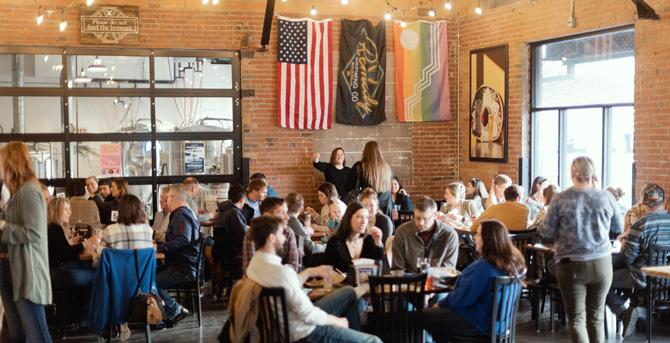
SDSU Ag Day
SD
Vander Laan were in Brookings for SDSU’s annual Ag Day. They interacted with over 200 students in the Student Union and gave away Skechers shoes with soy-based soles to a few lucky participants!
Soy 100
Around 130 farmers and students attended South Dakota Soybean’s annual one-day Soy 100 event which provides farmers with the latest weather, marketing, and agronomic information to prep for the upcoming growing season.


6 Summer Issue 2023 SDSL
INVESTING CHECKOFF DOLLARS
Soybean staff Bonnie Dybedahl and Maggie
Shop Talks

Mark your calendar for our summer shop talks near Northville on July 13 and near Wolsey on August 22. Join us at 5:30 P.M. to hear legislative updates, and enjoy a meal with us! For more information and to reserve your spot, call (605)330-9942.
Commodity Classic
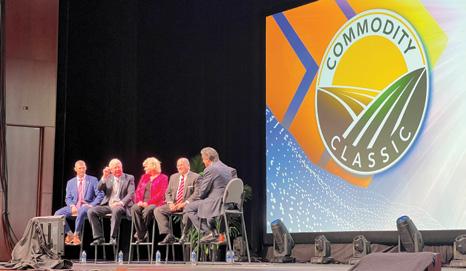
South Dakota Soybean farmers attended Commodity Classic in Orlando, FL in March. The trade show and meetings showcase the latest in agriculture technology. Attendees learned from visiting with trade show vendors and listening to speakers throughout the event.
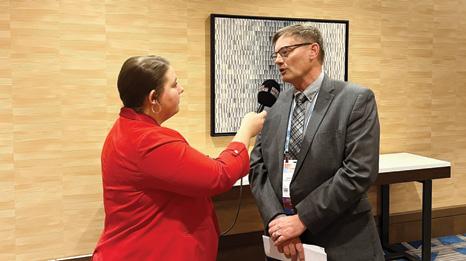
HEALTH PLANS FROM PEOPLE YOU TRUST.
SAVE OVER 35%
TRUST GOES WITH THE TERRITORY HERE.
Introducing South Dakota Farm Bureau Health Plans, quality coverage for everyone, not just farmers. To get access to these savings, just join South Dakota Farm Bureau for $60 a year.

For a quote or to apply, visit:
LiveWellSD.com
Summer Issue 2023 SDSL 7
( YOU )
You’re where the rubber meets the road. And the engine. And the interior.

All soybean farmers, including you, are busy replacing petroleum with your soy oil. How? By pooling your resources through your soy checkoff. Learn how your soy checkoff is bringing tangible returns back to you and your operation at unitedsoybean.org/hopper
Moving Soy Forward. Moving You Forward.
©2022 United
[61977-24 9/22]
Soybean Board
LETTER FROM THE EXECUTIVE DIRECTOR
 By Jerry Schmitz,
Director
By Jerry Schmitz,
Director
Relationships are the foundation of human existence. We need one another, whether as family members, community members, a nation or the world. Relationships are not automatic, and ask any married couple; relationships are not always easy, and tensions can rapidly increase. But they are invaluable to our happiness, wealth and very existence.
Our foreign trade partners regard relationships very highly. A few years ago, I was invited to attend the fiftieth-anniversary celebration of the soybean trade relationship between Taiwan and the United States. Taiwanese business people who had been retired for over twenty years attended the celebration for the opportunity to visit past U.S. acquaintances. It was very apparent that more than business, money, or prestige, they cherish personal relationships. They treat business partners with great loyalty and respect.
Just as the United States is efficient in food production, technology and other sectors, there are specific talents and resources that other countries can provide to us more efficiently By cultivating and nourishing relationships and trading our efficiencies back and forth, we create a synergy that benefits everyone. Balanced trade, including exports and imports, determines the future standard of living our families will enjoy. When countries turn inward to produce and consume only their own goods and services, trade efficiencies are lost, costs increase, and income is eroded. Less trade means lost opportunity and less wealth. The United States is a very wealthy nation, not because we only purchase our own products and services, but because we trade back and forth with other nations.
According to USDA, the value of all Ag exports in 2022 was $196 billion. Soybean exports accounted for $33 billion, Beef and Dairy $20 billion and Corn $19.5 billion. The top 3 purchasers of U.S. Ag products were: China $36 billion, Canada $28 billion, and Mexico $28 billion. Thirty-two countries purchased over $1 billion each in U.S. Ag products. Those sales are the result of relationships built over many decades.

Trade is a two-way street. There are a significant number of U.S. businesses invested in other countries. There are also foreign businesses investing in the U.S. and South Dakota that employ U.S. citizens, perform research to assist us in being successful, and provide and purchase goods and services that benefit our citizens. These are a few:
● Bayer develops new seed technologies, crop protection products, and pharmaceuticals. Bayer is a German-owned company.
● BASF produces chemicals used by the agriculture, pharmaceutical, construction, textile and automotive industries. BASF is a German-owned company.
● Syngenta develops new seed technologies and crop protection products in the U.S. Syngenta is headquartered in Switzerland but is a Chinese-owned company.
Director
● Smithfield in Sioux Falls purchases and processes hogs produced by local farmers. Smithfield is a Chineseowned company.
● Firestone Tire- Japan
● Holiday Inn- Owned by IHG- Britain
● Forbes- Hong Kong
● AMC Theaters- Wanda Group- China
● Budweiser- Belgium
● 7-11- Ito-Yokado- Japan
● Trader Joe’s- Germany
● General Electric appliances are produced in the U.S., but the GE appliance division is Chinese-owned.
● Ben and Jerry’s- Britain/Dutch
● Purina- Nestle- Switzerland
● Citgo- Venezuela
● Geber- Switzerland
We must continually cultivate new markets while being a reliable supplier to our existing customers. International trade fosters relationships that invite communication, loyalty and respect. Most importantly, those relationships help to maintain peace and security.
Summer Issue 2023 SDSL 9
JERRY SCHMITZ Executive
of SDSRPC and SDSA
INVESTING CHECKOFF DOLLARS
Executive
of South Dakota Soybean Research and Promotion Council & South Dakota Soybean Association
GROWING CONNECTIONS: NEW APP CREATES SOIL HEALTH SOCIAL NETWORK S

outh Dakota farmers, ranchers, and gardeners are making strides in improving soil health, and they’re willing to share what works and what doesn’t. A new app from the South Dakota Soil Health Coalition aims to make it easier to reach out to fellow farmers and soil health experts.

Growing Connections, accessible as a smartphone app and from a web browser, is like a social network focused on soil health. Users can post questions about no-till practices and cover crops, for example, and get feedback from those with experience. They can participate in group discussions or reach out directly to a mentor who has expertise in a certain practice or knowledge of a particular region of the state.
“It seems like anyone involved in soil health is more than willing to share their experiences with anyone that will listen,” said Darin Michalski, who runs a cow-calf operation west of Willow Lake, S.D.
It was helpful for him to reach out to a friend when he started transitioning to no-till, he said, especially when resisting the temptation to till again.
10 Summer Issue 2023 SDSL
Soil HEALTH
“Is there any AA for no-tillers?” he said.
That’s where Growing Connections can help. With a network of farmers, gardeners, agronomists and soil health experts, there’s sure to be someone with suggestions for solving a problem. Growing Connections users can also post articles or learn about events related to soil health.
It’s a time saver, as Caputa rancher Shawn Freeland sees it.
He and Michalski learned much of the soil health practices they use on their farms by attending tours and workshops, hearing talks by experts in the industry like Cronin Farms agronomy manager Dan Forgey from Gettysburg, S.D., and gathering opinions from others they met at conferences and events.
“Not everyone can take time to get away,” said Freeland, who serves as vice chairman of the South Dakota Soil Health Coalition board of directors.
Growing Connections can provide instant feedback.
“Our goal was to be able to connect producers in the palm of their hands,” said Cindy Zenk, coordinator for the South Dakota Soil Health Coalition.
If farmers out in their corn field notice the crop isn’t emerging, for example, they can take a photo or video, post it to Growing Connections and get a response immediately. “They can connect with others and choose the best management decision to make their operation more sustainable,” Zenk said. Professionals from South Dakota State University Extension, the Natural Resources Conservation Service and the South Dakota Grassland Coalition can give feedback, as well as other farmers and ranchers.
“It’s an opportunity to connect,” Zenk said.
Users can search for mentors by name, area or by project, such as cover crops, livestock, or no-till gardening. Questions can be posed to the entire group of registered mentors or users can interact one-on-one with a single mentor. Users can reach one another by messaging through the app or making a phone call.
Zenk hopes it will help people make connections more quickly and that those relationships will be long-lasting.
“The best people to learn from are the people who are doing it,” she said.
Michalski, the Willow Lake farmer, likes the concept. “I like that everybody is available to talk,” he said.
Freeland wishes he would have had a mentor readily available to answer questions as he started implementing soil health practices at his ranch on the edge of the Black Hills.
“It would have been a lot easier to get on and find someone to chat with,” he said. “There might have been somebody closer.”
Both men are more than willing to share what they’ve learned. They’ve hosted tours and regularly answer questions about rotational grazing and grazing cover crops, for example.

Freeland hopes that the app and the social network it creates will help speed the process of improving soil health across South Dakota.
“Soil health is bigger than just raising healthier crops or higher yielding crops,” he said. “It’s a lasting change for generations to come. If we can accelerate that process and get the word out quicker with this app, I think that’s what we’re after.”

The app is available for free in the Apple App Store and Google Play store, and the web version can be found at www.growingconnectionsapp.com. More information, including app usage instructions, can be found at www.sdsoilhealthcoalition.org/growing-connections-app

Summer Issue 2023 SDSL 11
Scan QR code to install the app and connect
South
and
www.growingconnectionsapp.com
with
Dakota farmers, ranchers,
gardeners.
CHECKOFF COLLABORATION PROMOTES COVER CROPS AND SOIL HEALTH


Farmers continue to work toward sustainability goals through the Farmers for Soil Health (FSH) initiative, a partnership among the Soy Checkoff, the Pork Checkoff, and the National Corn Growers Association. The partnership involves other entities, including the USDA, which makes cost-sharing available for some soil health practices. FSH is part of a broader USDA project called the Partnerships for Climate Smart Commodities, according to Robert Bonnie, USDA Under Secretary for Farm Production and Conservation.
“We’re making a $3.1 billion investment in producer-led collaborative projects all over the country that are intended to increase the deployment of climate-smart practices: soil health, methane reduction in livestock, nutrient management, and improved forest management,” said Bonnie, at Commodity Classic, following the signing by U.S. Secretary of Agriculture Tom Vilsack of an agreement with Farmers for Soil Health. “These are bottom-up projects that producers, producer groups, commodity groups, and conservation groups have put together across the country.”
The USDA’s Partnerships for Climate-Smart Commodities program announced last fall its intention to award FSH a $95 million grant. With this award, FSH will launch a program to advance the adoption of cover crops and conservation tillage in the states that collectively produce more than 85 percent of the nation’s corn and soybeans.
USDA’s Partnerships for Climate-Smart Commodities grant will facilitate major progress toward FSH’s goal of doubling cover crop acres in the U.S. to 30 million acres by 2030. The Partnerships’ overall goals are ambitious. Their outreach, according to USDA’s website, is to more than 60,000 farms, encompassing more than 25 million acres of working land engaged in climate-smart production practices, like cover crops, no-till and nutrient management, as well as pasture and forestry management.
More than 60 million metric tons of carbon dioxide equivalent are to be sequestered over the lives of the projects, says the agency, equivalent to removing more than 12 million gasoline-powered passenger vehicles from the road for one year.
The agreement with FSH, said Bonnie, represents the first of USDA’s climate-smart projects. “And what we’re going to try to do here is increase the amount of cover crop adoption across, I think, at least 11 states, and we’re really excited about it,” Bonnie told the South Dakota Soybean Network. “Our interest at USDA is to demonstrate that U.S. agriculture, through a voluntary, incentive-based approach, can make a significant impact in reducing greenhouse gas emissions and helping solve the climate problem we
face, and at the same time, maintain agricultural productivity and do this in a way that pencils for farmers. And this [FSH] project is a really important part of that.”
Under Secretary Bonnie describes USDA’s Climate Smart projects, of which FSH is one, as an initiative from which producers can profit. “This…effort where we create new markets for climatesmart commodities, whether it’s carbon or other things that we think can benefit producers, that they can make money from, that they can be rewarded for, that’s less tangible than the acres or the tons, but we think it’s really important, we think it’s really important to create that model here in the United States,” said Bonnie. “We think it’s a model that may work globally as well and we want to make sure we position U.S. agriculture to be a leader on this.”
12 Summer Issue 2023 SDSL Soil HEALTH
Super SpRoUtS
CrosSworD

Visit https://tinyurl.com/SoybeanCounties to see how many soybeans are grown in each county in
Down:
1. This county is #8 and is located in northeastern SD.
4. This county is #7 and contains the Ingalls homestead.
5. This county is #4 and is the most northeastern county.
6. This county is #3 and contains the largest city.
8. This county is #10 and is in central SD.
Across:
2. This county is #6 in the north central part of SD.
3. This county is #1 in soybean production.
7. This county is #9 and is home to the Jackrabbits.
9. This county is #2 and is home to Aberdeen.
10. This county is #5 and is in the north central part of SD.
WanT more fun? sHow us yOur AnSwerS!
SoYbeAn Swag GiveAwaY


With your parents help, complete this page and send a photo to mkessler@sdsoybean.org or post a photo and tag @SDSoybean on Facebook. You can also mail your completed page and contact information to SD Soybean at 5000 Broadband Ln. Suite 100, Sioux Falls, SD 57108. One participant with a completed page will be sent a super special soybean item! Entries must be recieved by September 1, 2023 to be eligible.
MeEt SpRoUt, tHe masCot for tHe super sProUtS educatiOnal pRogRam. Super SpRoUtS aImS to pRovide at home educatiOnal acTivitiEs for cHilDren of alL ages. SpRoUt’s goAl is to enSure everyOne kNowS aboUt tHe superPowerS of SoYbeAnS! Have Fun anD be sure to enTer!
INVESTING CHECKOFF DOLLARS
Soil HEALTH
A JOURNEY TO NO-TILL COVER CROPS
By Kurt Lawton
If you monitor soil moisture, your journey into less tillage and successful cover crops on soybean and corn acres increases dramatically,” says Austin Carlson, who farms with his dad, Bruce, near Garretson in southeast South Dakota.
The Carlson’s sloping soils, gully and wind erosion led them on a journey to achieve more resilient soils. What pushed them forward was a caring and knowledgeable mentor across the fence and a gully-washer rainstorm.

That mentor across the fence was SDSU Extension Soils Field Specialist Anthony Bly. “We’re fortunate to farm next to Anthony, who spent several years encouraging us to try no-till and cover crops. It was an eye-opener seeing the difference between his no-till field soils and our conservation-tilled soils,” Carlson says.
A GULLY-WASHER KICKOFF
Watching a heavy spring rain soak into Bly’s no-till field yet create gullies across the fence jump-started Carlson’s family farm journey into no-till, beginning with soybeans.
“Seeing our soil wash away made us realize our current practices were not sustainable. So my dad, who started no-tilling beans a few years earlier, shifted one corn field to no-till in 2016,” Carlson says. “By 2018, we were 100% no-till and never looked back.”
Carlson credits his dad’s use of the NRCS EQIP program as a driver that helped the transition. A three-year commitment to several fields using no-till and cover crops provided a great learning platform to get beyond the hiccups of planter adjustments and cover crop experiments.
Bruce’s efforts helped pave the way for Austin’s recent no-till upgrade of an older planter. “When I had seeding depth challenges this spring, my dad and other mentors were quick to help with weight and down-pressure solutions,” Carlson adds.
SOIL HEALTH SCHOOL BOOSTS JOURNEY

In 2018, the second springboard in their soil health journey happened when Bly recommended that they attend the hands-on SD Soil Health Coalition’s (SDSHC) annual soil health school.
“The event was at Kurt Stiefvater’s farm near Salem, where we gained an amazing amount of practical knowledge from farmers about their journeys of what works and what doesn’t,” Carlson says. “We didn’t know anyone, yet everyone welcomed us and willingly shared the details of their practices in classroom and field
14 Summer Issue 2023 SDSL
for SD-USDA Soil Health Initiative
“
South Dakota cattle owners seeking grazing. (Source: SD Grazing Exchange)
demonstrations. The school had such a profound impact on my soil management perspectives that I quit my off-farm job to find work promoting soil health.”
Fortunately, SDSHC had an open position, Carlson applied, and he’s been working as a soil health technician for the past five years, along with farming. “Without this group, we wouldn’t have interacted with so many great mentors that continue to have a big impact on our farm,” he adds.
ADDING A THIRD CROP
By attending this confidence booster program, Bruce and Austin began experimenting with greater crop diversity by growing small grains, followed by a cover crop in 2018, in rotation with their corn and soybeans.
The Carlsons learned to think holistically to examine all fields on their small farm with a purpose in mind. Nearby fields, easily accessible by cattle, are rotated with a small grain crop followed by drilling a diverse and economical cover crop mix that is grazed. A corn-soy rotation is used on the remaining fields unreachable by cattle, followed by cereal rye or winter wheat cover crop in sensitive areas that are generally wet or subject to erosion.
To save money on cover crop seed, Carlsons keep their small grain crops of cereal rye, oats, or wheat to use later as a cover crop. They also sell seed to some neighboring farmers, a seed supplier and use it for custom drilling.

On cropland they want to graze, Carlson’s wife and partner Baylee, an NRCS soil conservationist, helps develop cover crop species blends. “We’ll add a diverse mix of millets, sudangrass, turnips, radishes, cowpeas, sunflowers, rapeseed and flax. We aim to keep the mix inexpensive, shooting for 60-70% cool and warm season grasses, with the remaining species divided among cool and warm season broadleaf species,” he says.
GRAZING COVER CROPS
Seeding cover crops after a small grain harvest allows the growth of these diverse mixes to be fall grazed. The Carlsons have electric wire border fences and run strands of poly wire to section
off grazing areas. They like the flexibility to vary grazing area size based on their harvest schedule and the weather.
“This balancing cow and calf diets with days of cover crop grazing keeps farming fun, and it’s taught us the most about soil health,” he says. “Baylee and I get excited when we’re out there moving wire, seeing manure get distributed nicely, learning what species the cattle like to graze or not, watching root growth and soil structure improve, and seeing cattle in great condition with big calves when we wean them.”
One experiment they tried last year was adding five or six pounds of clover when drilling their oat crop—to hopefully eliminate the cover crop drill pass and fuel expense. “The clover established with the oats and remained dormant until we harvested the wheat. Unfortunately, it was a dry summer, and the clover stand wasn’t enough to graze,” Carlson says. “But it overwintered thanks to a nice layer of snow and produced what looked like a field of alfalfa this spring.”
Carlson is encouraged by this practice and believes it should work out well, given adequate moisture. They no-tilled corn into that clover stand and gained an excellent legume fertility credit.
WATCHING MOISTURE, PLANTING GREEN
Like that clover stand, the Carlsons no-till seed their corn or soybeans green into the growing cover crop that follows small grains if adequate soil moisture exists.
One critical cover crop management detail they’ve learned is paying strict attention to soil moisture. “Our favorite practice when it’s wet, like in 2018 and 2019, is to let the cover crops grow for a while to absorb excess moisture. More growth adds roots that loosen compaction and build soil structure and just no-till corn or soybeans right into it,” he says. “And we have the flexibility if it’s dry to terminate the cover crop early so it does not impact the cash crop.”
Over the past few years, this lack of moisture has challenged fall cover crop stand establishment in South Dakota. But, on the other hand, blowing soil has helped cropland farmers realize the damage that tillage can cause—even loss of life on roads and highways when flying soil impedes driver visibility.
Summer Issue 2023 SDSL 15
Carlson acknowledges that no-till and cover crops have been a learning journey, like so many challenges in farming. But by looking more critically at soil health and understanding these new practices, he says it’s been a lot more fun than just doing the same tillage thing every year.
“At the very least, our soil health has greatly improved in five years. By implementing the Five Principles of Soil Health, we maintain soil cover year-round with living roots to cut water and wind erosion. Our no-till soil is crumbly to provide a good seedbed with limited disturbance. We’ve added small grains and cover crops to add plant diversity. And we’ve integrated livestock to increase soil biological activity, improve nutrient cycling while providing quality food for our cattle,” he adds.
PRODUCERS REDUCING TILLAGE
SDSU forage agronomist Sara Bauder is hearing more questions from row crop producers interested in adding cover crops. “Their goals run the gamut from stopping erosion and grazing animals to retaining more soil moisture and building soil health,” she says.
In Carlson’s travels for the SDSHC, he noticed a lot less tillage last fall, given two years of dry weather and the impact of blowing soil. “And this spring, I’ve seen many more no-till soybean fields, which is a step in the right direction.”
“Cover crop adoption is on the rise thanks to increasing awareness that soil health is essential and not just a trend,” Bauder says. In addition, groups like the Soil Health Coalition; the Grasslands Coalition; the corn, soybean, no-till and forage associations; SDSU Extension, and NRCS are all working to help producers use cover crops to best fit their operations. And many incentive programs are available to help reduce seed, application costs and reduced tillage practices.
NRCS Agronomist Eric Barsness from Brookings says the easiest practice to achieve successful cover crops is after silage or small grain harvest because species grow more before frost. “For corn-soybean rotation, I think aerial seeded cereal rye applied in late August or early September works well if adequate moisture exists,” he adds.
For soybean and corn producers without livestock yet want to explore the value of cover crop grazing, you might find a local connection. The SDSHC offers a free state-wide Grazing Exchange to connect people who seek grazing for their animals with producers who have fields available for grazing.
COVER CROP MENTORS
Carlson recommends using the Mentor Network of experienced South Dakota soil health farmers, compiled by the SDSHC. In addition, you can now download a free mobile app called Growing Connections. “It’s a fun opportunity for local farmers to talk to farmers. I look at it like a localized AgTalk where you can pose soil health questions or issues and get numerous responses that offer solutions or ideas to try,” he says.
Midwest Cover Crop Decision Tool

A second recommendation from Carlson mirrors their journey. “Since I believe in unbiased information from other farmers or researchers, attending the Soil Health school provides great access to so many quality mentors practicing many cool soil-improving practices across the state—and no one is selling anything,” he adds.
In August, the Carlsons are paying their knowledge forward by partnering with their local mentor Anthony Bly to host the 2023 SD Soil Health School on their farms.
One valuable takeaway that mentors helped the Carlsons prove to themselves during the transition to no-till and cover crops is that better soil biology can dramatically improve farm resilience and sustainability.
RESOURCES:
Five Principles of Soil Health: sdsoilhealthcoalition. org/technical-resources/the-five-principles-ofsoil-health
Grazing Exchange: sdgrazingexchange.com
Mentor Network: sdsoilhealthcoalition.org/ mentor-network
NRCS Cover Crop Selection tools for South Dakota: nrcs.usda.gov/conservation-basics/conservation-bystate/south-dakota/cover-crops-in-south-dakota
SD Soy Soil Health resources: sdsoybean.org/topics/soil-health
Midwest Cover Crop Decision Tool: midwestcovercrops.org/selector-tool
Growing Connections Mobile App: sdsoilhealthcoalition.org/growing-connections-app 2023 SD Soil Health School: sdsoilhealthcoalition. org/event-calendar/soil-health-school
SOURCES:
Austin Carlson, Garretson SD farmer and Soil Health Technician, SD Soil Health Coalition
Eric Barsness, NRCS Agronomist, Brookings
Sara Bauder, SDSU Extension Forage Agronomist
16 Summer Issue 2023 SDSL
Soil HEALTH
MORE VALUE FOR YOUR MEAL
MORE VALUE FOR YOUR MEAL
South Dakota soybean producers are working through their checkoff to strengthen our livestock industry and infrastructure — all of which feeds our bottom line.
South Dakota soybean producers are working through their checkoff to strengthen our livestock industry and infrastructure — all of which feeds our bottom line.

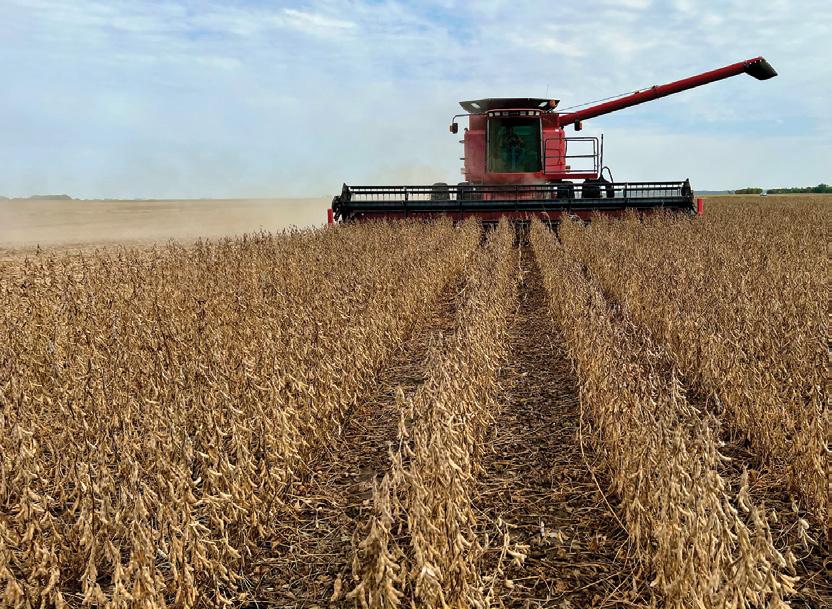

LEARN MORE AT WWW.SDSOYBEAN.ORG
LEARN MORE AT WWW.SDSOYBEAN.ORG
Summer Issue 2023 SDSL 17
SDSOYB084-2023_Focus_7.22x8.5
SDSOYB084-2023_Focus_7.22x8.5
SOUTH DAKOTA ROOTS SHINE BRIGHT AT BALI GREEN SCHOOL


 By Kurt Lawton
By Kurt Lawton
18 Summer Issue 2023 SDSL INVESTING CHECKOFF DOLLARS
Leslie Medema
Jeff Thompson, SDSA Second VP and uncle of Leslie Medema
While Bali, Indonesia, may conjure visions of a vacation paradise, it’s also home to the globally renowned Green School Bali with South Dakota rural connections.
Sioux Falls native and head of the Green School Bali’s International curriculum, Leslie Medema, credits her youth with her mom’s rural South Dakota family and both of her grandfathers’ personal histories of entrepreneurial pioneerism. That beacon launched her affinity with a rural community, education, and an interest in the history of Vietnam and Southeast Asia.
As the niece of Jeff Thompson, a farmer from Colton and South Dakota Soybean Association Second VP, Medema fell in love with the land and the rural community during many weekend and summer visits to the Thompson farm in Lyons and the Hainje farm in Dell Rapids.
“In many ways, it was my time spent on the farm doing projects and sharing in the farming community that really developed my core identity of what I love,” she says. “It was such a nice family feel, where family is bigger than your immediate family. Family is the community.”
AN AGRICULTURAL CONNECTION
When Medema returned to the Thompson farm for a visit in April, discussion with her uncle Jeff turned to soybeans, prompted by his shirt that read, ‘Will randomly start talking about soybeans.’
“It made me laugh yet wonder if South Dakota soybeans make it to Indonesia because we eat soybeans daily in Bali,” Medema says. She learned that her daily soybean consumption in the form of delicious protein-rich tempeh (traditional Indonesian fermented whole soybean food cake) could be coming from South Dakota.
Indonesia, the fourth highest population in the world across 17,000 islands with the largest economy in Southeast Asia, has purchased U.S. soybeans since the 1980s. Thanks to the soybean checkoff funding the U.S. Soybean Export Council (USSEC) efforts, Indonesia has become a top-five export market. High consumption of traditional soy foods (tempeh and tofu) makes Indonesia the largest food-use soybean importer of 2.5 to 2.6 million metric tons (MMT) annually. In addition, its livestock and fishery sector expansion among Indonesia provinces continues to grow soybean meal import from the U.S., with sales of 5.5 MMT.
The discussion also made Medema ponder the common U.S. disconnect between city and rural, as her Sioux Falls friends live near soybeans yet lack a basic understanding of local farms, crops, and livestock. It is the opposite in Bali, as the Green School teachings tie directly to community sustainability and nature immersion connected to real-world projects and applications.
MEANINGFUL, PRACTICAL CURRICULUM
Medema is now in her 12th year at Green School, Bali leading curriculum development and implementation across their growing number of schools. Bali school is a blend of almost 500 international and local children who learn in a much different, more practical way than U.S. school curricula, where teaching to tests judges education.
“What’s unique is that students in each grade absorb basic learnings then walk outside their wall-less bamboo structure classrooms to apply this knowledge immediately on experiential projects across a 28-acre campus of rolling gardens and a river. And every project impacts the local community in a renewable and sustainable way,” Medema says.
For example, each K-12 class has a garden or animal to care for—tending to the whole process from seeds and babies to harvesting vegetables and meat, even learning how to cook meals. They learn alongside local farmers and gardeners, achieving both success and failure. There is also a rice, coconut and native forestry curriculum to understand every aspect from growing through different product uses.
Students have built functioning bamboo bridges across the river. They created the largest biofuel powered bus system on Bali, formulating the fuel from used cooking oil and developing business and entrepreneurial skills by managing the six-bus company. In addition, students partnered with a solar company to take their campus off the grid. And the Green School also created a recycling company as part of a learning program.
For more details on this award-winning school of the future, search for Green School Bali and visit their YouTube page @greenschoolbali.
youtube.com/greenschoolbali
Summer Issue 2023 SDSL 19
“My goal is for every child to have a joyful and meaningful experience at school. We provide a place where they can explore their passion and develop a mindset of how they want to give in service to the world and their community,” she adds.
“In many ways, we’re instilling that sense of community where mentors, adults and teachers focus on the youth and a brighter future. It’s much like what enhanced the learnings of my youth through community in rural South Dakota.”
FROM THE FARM FIELD TO THE BALL FIELD
Soybean Oil Used in DSU’s New Artificial Turf Football Field
By Janelle Atyeo
When Dakota State University football kicks off this fall, they’ll be playing on a bean field.
This spring, the school in Madison, S.D. installed artificial turf with a backing made from soybean oil on the first of two of its sports fields, and school officials say they’re happy to give a nod to South Dakota farmers while offering some major improvements for their players.

“We have a great relationship with the ag people in our area. This was a very fortunate way for us to support the industry more,” DSU athletic director, Jeff Dittman, said.
The first big football game on the new field will be the eighth annual Ag Bowl, set for Aug. 31 against the University of Wisconsin-La Crosse. In a celebration of agriculture, local producers get free tickets to the game and tailgate meal.
The next night, Madison High School will open their football season on the turf.
“It’s very exciting to see the crops that we raise locally turn into useful products - from soybean turf to other products like tires, to soles on shoes,” said Terry Schultz.
As CEO of Mustang Seeds, headquartered in Madison, and an industry representative on the South Dakota Soybean Association
board, Schultz planted the idea of opting for a soy-based product for the field and helped in the fundraising efforts.
“All of these different forms of soybean-based products help promote soybeans to the general consumer,” he said.
Soy-based turf isn’t exactly new, but it is seeing a resurgence, according to Brock Wilson of Mid-America Golf and Landscape who did the installation at DSU. From golf greens and rooftop gardens to Central Park and road medians, the soy-based turf has been used in many places, including about 30 sports fields in the Midwest.
Made in Dalton, Georgia, AstroTurf is the only company that makes turf products with renewable soybean oil. The soy-based backing and all the turf components are made in the U.S. Midwest Golf is a distributor.
“We work where a large part of soybean growers are found,” Wilson said. “We’re able to use a product of the plentiful industry around there.”
The recently installed AstroTurf in Madison is the first of two fields that will be covered in the soy-based turf. It will eventually be home to DSU’s new soccer program. The second AstroTurf field will be ready next fall when the football team moves into its new stadium.
20 Summer Issue 2023 SDSL
INVESTING CHECKOFF DOLLARS
Dakota State University is in the midst of a major, $100 million upgrade of its athletic complex.
The first phase includes the new track and soccer field, replacing Trojan football stadium, as well as an upgraded esports arena, locker, weight and training rooms, gathering areas, classrooms and a biomechanics lab. The larger plan includes an arena for basketball and volleyball, an indoor track, and new turf baseball and softball fields.
Dittman, the athletic director, sees the improvements as a major recruiting tool. That includes the artificial turf, which some high schoolers grew up competing on. He likes that the soy turf field can handle heavy use. Trojan athletes weren’t allowed to practice on their grass competition field in an effort to keep it in tip-top shape for games. Now the soy turf can host high school and freshman games as well as practices. The first program to use DSU’s new turf will be a football camp for high school athletes in late July.
“You can use it as much as you want,” Dittman said. “There are some big advantages.”
“The grass field had to be watered, mowed, and babied through the season. It would start out looking great in August,” Dittman said, but by the end of the year, it looked rough. It was an aesthetic issue as well as a safety issue, he said.
The turf field won’t require as much maintenance. Field markings and yard lines don’t have to be repainted before each game, and the Trojan logo at center field will stay a vibrant blue.



“It looks fantastic,” Dittman said.
KEEPING
• Equipment modification

• Sales, installation, service and support of precision ag products
• Liquid fertilizer system installs
• Data retrieval and analysis
• In-house pump repair
• Planter meter calibration
• Planter inspection and winterization
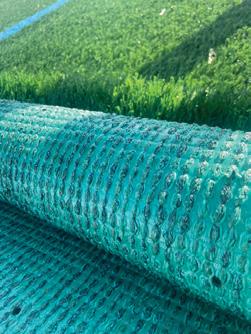
• Electrical harness repair
• Planter, sprayer, tractor and combine upgrades

Summer Issue 2023 SDSL 21
WWW.AGTEGRA.COM
YOUR FARM RUNNING STRONG.
RETIRING CHECKOFF DIRECTOR RECALLS SIGNIFICANT BOARD EXPERIENCE
Tim Ostrem was in Mexico when a soybean meal buyer asked for him by name. The buyer wanted to remind him that he’d paid a visit to Ostrem’s farm to see how that soybean meal he uses got its start in the fields around Centerville, South Dakota.
It’s these sorts of connections that Ostrem values most from his time serving on the board of the South Dakota Soybean Research and Promotion Council. He’s retiring in June after serving three terms or nine years, helping decide how checkoff dollars are put to use and promoting South Dakota-grown soybeans around the globe.
He’ll never forget those personal relationships developed with big, international buyers, he said, some of whom he got to know on a first-name basis.
“It’s exciting that people who buy a lot of our soybeans can relate to a South Dakota farmer,” Ostrem said.

It was 10 years ago on a trip to the Pacific Northwest to see where Midwest-grown soybeans are shipped across the ocean to Asian customers that Ostrem first took an interest in the work the checkoff does. The See for Yourself tour introduced him to the way soybeans are shipped around the world and allowed him to get to know South Dakota Soybean staff and board members.
When a spot opened on the checkoff board, Ostrem got a call from the staff asking if he’d be interested in filling a spot left by Doug Hanson of Elk Point. Like Ostrem today, Hanson was reaching his term limit after nine years on the board. Ostrem ran unopposed and earned his place representing District 2, covering the five southernmost counties in the southeastern corner of the state.
“As board director, you have an opportunity to make the best value for the checkoff,” Ostrem said.
Some of those opportunities are through the research on growing soybeans and creating new uses for soybeans. Ostrem took to heart the university research on growing soybeans sustainably. Since joining the board, he has expanded his use of no till practices.
“This year, every acre of beans we plant will be no till,” he said. “That’s a complete 180-degree change from nine years ago.”
Ostrem was involved in promoting in-state processing opportunities and in his time saw the plant in Aberdeen come to fruition. Now a plant in Mitchell is in the works.
22 Summer Issue 2023 SDSL INVESTING CHECKOFF DOLLARS
Renewable biodiesel and sustainable aviation fuel are other value-added opportunities for soybean growers. Early in his time with South Dakota Soybean, he got involved on the National Biodiesel Board. He was surprised to learn of all the other diverse organizations the soybean checkoff is a part of, from the U.S. Soybean Export Council and the U.S. Meat Export Federation to the USA Poultry and Egg Export Council. While his time on the state checkoff board is ending, Ostrem will continue to represent growers on the United Soybean Board and serve as board director for Clean Fuels Alliance America. At 66, he has no plans of retiring from farming.

“It’s
what I do,” he said.
He farms between Centerville and Wakonda with his brother and nephew. His son and two daughters recently joined them, making for the fifth generation on their family farm. His wife, Kari, also helps around the farm.

Ostrem encourages others interested in the checkoff to get involved, and for anyone with questions about the soybean checkoff to contact the director for their area.
Hearing from other farmers is important, he said: “When we make decisions as board members, we think ‘what would fellow farmers think of this decision and how we are spending their hard earned money?’”
Summer Issue 2023 SDSL 23
“Now we can get more value for our soybeans in our own country rather than having to export so many of them,” Ostrem said. “China is still our biggest user, but to diversify the use of our soybeans is of great value to the farmer.”
Tim and his wife, Kari
8
“The daily supply of protein needed to feed this planet on a per-person basis is about 83 grams per person. Now that’s what is being consumed, that’s what’s basically needed on the supply side,” said Marshall. “So that means, across the whole planet, every day, we need just over 660 billion grams of protein.”

For those who avoid the metric system, that many grams is almost one-anda-half billion pounds of protein, animal and vegetable. Marshall, during an interview for a story in the magazine American Soybean, looked ahead to the year 2050, when, if the current growth trend continues, the globe’s population will have swollen by another 20 percent. “That means,” he said, “that supply share is going to grow by another nearly 150 billion grams of protein daily.” That brings us to more than 888,000 tons of daily global protein demand by 2050. Back to the present, Marshall says the war in Ukraine and other geopolitical issues have resulted in the number of food-insecure people climbing to 1.6 billion globally. The implication is that responsibility is increasing on able counties to be food suppliers for those countries that are less able to produce enough food to feed themselves.
The world’s population, now hovering at eight billion, needs a hefty amount of protein. United Soybean Board Market Intelligence Vice-President Mac Marshall, referring to the agriculture supply balance sheets from the United Nations Food and Agriculture Organization, puts that in weighty terms.
“Turning the lens back to the U.S. where we’re an incredibly fortunate and prosperous nation, we have, I would say, the best farmers on earth, a very resilient food supply system, one that has for a long time enabled us to produce an exportable surplus and supply our partners and customers around the globe,” said Marshall, “the importance of that really comes back into plain view.”
Marshall says he’s optimistic a tendency toward global collaboration will lead those areas with surplus to help supply those areas of deficit. “If we take that approach and scan back out, I think we’ll be in a good place for the years to come,” he said. “But I never want us to get to a place where we become complacent and start thinking that food just happens without a whole lot of gears turning.”
24 Summer Issue 2023 SDSL
BILLION PEOPLE NEED A LOT OF PROTEIN INVESTING CHECKOFF DOLLARS
VALUE MEAL: HOW LIVESTOCK DEVELOPMENT CAN BOOST PROFITABILITY FOR SOYBEAN GROWERS
Successful livestock nutrition programs have incorporated soybean meal as a primary staple for several generations. Soybean meal offers livestock producers a highly digestible source of protein rich in essential amino acids. And while meal may not fetch the same premium as oil in today’s price environment, it nevertheless remains critical to the bottom lines of soybean producers in South Dakota and across the country.
With that in mind, the South Dakota Soybean Research and Promotion Council has committed to supporting livestock development initiatives at home and abroad, investing in research on animal nutrition and educating producers on the merits of livestock diets built around soybean meal.
LIVESTOCK DEVELOPMENT AND SOYBEAN PROFITABILITY

The impact of a healthy, robust livestock industry on soybean profitability cannot be overstated. According to USDA data, approximately 60 percent of all soybean meal produced in the U.S. is consumed by livestock domestically. The remaining 40 percent goes toward livestock production around the globe, which accounted for $6.16 billion worth of revenue in 2022.
The above does not reflect whole bean exports — valued at $34.39 billion for the year — and the overall demand for soybean meal worldwide.
Dave Iverson, South Dakota Soybean Research and Promotion Council District 4 Director, points out that soybean processing yields a 4:1 meal-to-oil ratio. That fact, coupled with higher yields and increased planted acres, makes supporting meal demand all the more important.
“We need to create more meal demand, and livestock is the perfect opportunity for soybean producers,” says Iverson, who farms near Astoria.
DOMESTIC PRODUCTION THRIVES
In Iverson’s mind, that demand growth starts at home. “It’s really important to keep our focus on increasing animal production here in South Dakota,” he says.
A strong domestic livestock industry provides market stability. It also requires less freight and other trade-related costs for homegrown soybean meal.
South Dakota Soybean has long played an active role in supporting research and education to advance livestock nutrition using soybean meal in diets for swine, poultry and dairy cattle. More recently, however, the checkoff has turned its attention to aquaculture production as an emerging destination for meal.
Iverson also notes that new processing facilities in South Dakota offer soybean producers the possibility of increased returns with a strong livestock industry in place. “That’s a great opportunity for South Dakota producers to keep that value instate,” he explains.
South Dakota Soybean Association board member Brent
Greenway agrees. “If we could consume all of the soybean meal that we grow and create in South Dakota, that’d be just a phenomenal boon for the state,” he says.
Greenway grows row crops, runs a cow-calf operation and finishes hogs outside of Mt. Vernon. He says he currently feeds more meal to the pigs in his finishing barns than his farm produces and is excited about a new processing facility slated for nearby Mitchell.
GLOBAL MEAL DEMAND GROWS
Their emphasis on domestic livestock development notwithstanding, both farmers also assert the value of their checkoff developing global markets for soybean meal.
An emerging middle class is creating additional demand for livestock production on the international side. South Dakota Soybean has responded to this promising development by working alongside other checkoff organizations and industry leaders to nurture trade relationships and advance the nutritional value of soybean meal in livestock diets.
“There’s a vast number of things that the checkoff is doing that helps the producer fetch a higher price for their beans,” says Greenway. South Dakota Soybean sponsored a trade mission in January to Morocco in the Middle East/North Africa (MENA) region, which has emerged as a leading destination for U.S. soybean meal. “These trade missions are showing the effectiveness of soybean meal as a feed product for livestock,” he says.
GET INVOLVED
A lot of exciting work is happening around new uses for soybean oil, but the checkoff’s emphasis on supporting meal demand remains just as important. To learn more about this work, visit www.sdsoybean.org or talk to your district director on the South Dakota Soybean Research and Promotion Council.
Summer Issue 2023 SDSL 25 ADVERTORIAL
BRYANT FARMER HONES LEADERSHIP SKILLS IN GENESIS LEADERS PROGRAM


Malorie Anderson is anxious to increase her involvement in her family’s farm. She’s also looking forward to leadership roles in her community and in commodity organizations. Part of Anderson’s excitement is the result of her participation in the second class of the South Dakota Soybean Genesis Leaders Program, a series of educational sessions that were completed this spring in partnership with the South Dakota Agricultural and Rural Leadership Foundation. “The four seminars provide an overview of soybean organizations, consumer engagement, identifying unique leadership talents of the participants, exploring issues in the industry and the legislative process,” Anderson told the South Dakota Soybean Network, “and just bringing growers into contact with current and future customers while preparing the participants to be leaders in the community and the industry.”
The young Bryant, South Dakota farmer wanted to be in the program to surround herself with like-minded individuals “which ultimately would create a network of people who want to see the industry succeed and be part of the story,” she said. “The experience really did help me gain a more rounded understanding of the soybean industry.”
Anderson’s drive to learn is partly because she’s intrigued that, compared to 1950, today’s farmers produce 262 percent more food using two percent fewer inputs. She is also impressed by the fact that farmers continue to strengthen their productivity while making up scarcely two percent of the U.S. population. “As a producer, those two statistics led me to understand that it is vital for the future growth of the industry to understand soybean products, their uses and the research checkoff dollars are funding,” she said. “When I
looked at the four sessions that the Genesis Leaders Program provided, I knew it would build a foundation of knowledge that I could utilize as an advocate.”
Anderson acknowledges that farmers focus on growth, but not necessarily growth in personal development. “The Genesis Leaders Program really is designed to build a deep foundation of leadership skills and industry knowledge, positioning a person for growth in your operation and in your career,” she said, recommending the sessions to others.
Doubling as a grain marketing specialist for a local cooperative, Anderson rents 400 acres of mostly corn and soybean ground with an eye on increasing her responsibilities on the family farm. “I am also in a lease-to-own agreement in which I will own 25 percent of our cattle herd, totaling 75 head of cattle,” she said.
“The legacy that my great-grandfather, grandfather, and now dad has paved always has made me super excited to return to our family farm, and hopefully someday be able to pass it on to the next generation, but personally, for me, it’s more than just the family ties,” said Anderson. “I find it super rewarding to be a part of an industry that helps feed the world.”
26 Summer Issue 2023 SDSL INVESTING CHECKOFF DOLLARS
2023 SD Soybean Genesis Leaders Program group
MALORIE ANDERSON
( YOU )




You just increased your sales to Egypt 708%. Bon voyage.




All soybean farmers, including you, have been busy racking up big sales with export markets. How? By pooling your resources through your soy checkoff. Learn how your soy checkoff is bringing tangible returns back to you and your operation at unitedsoybean.org/hopper
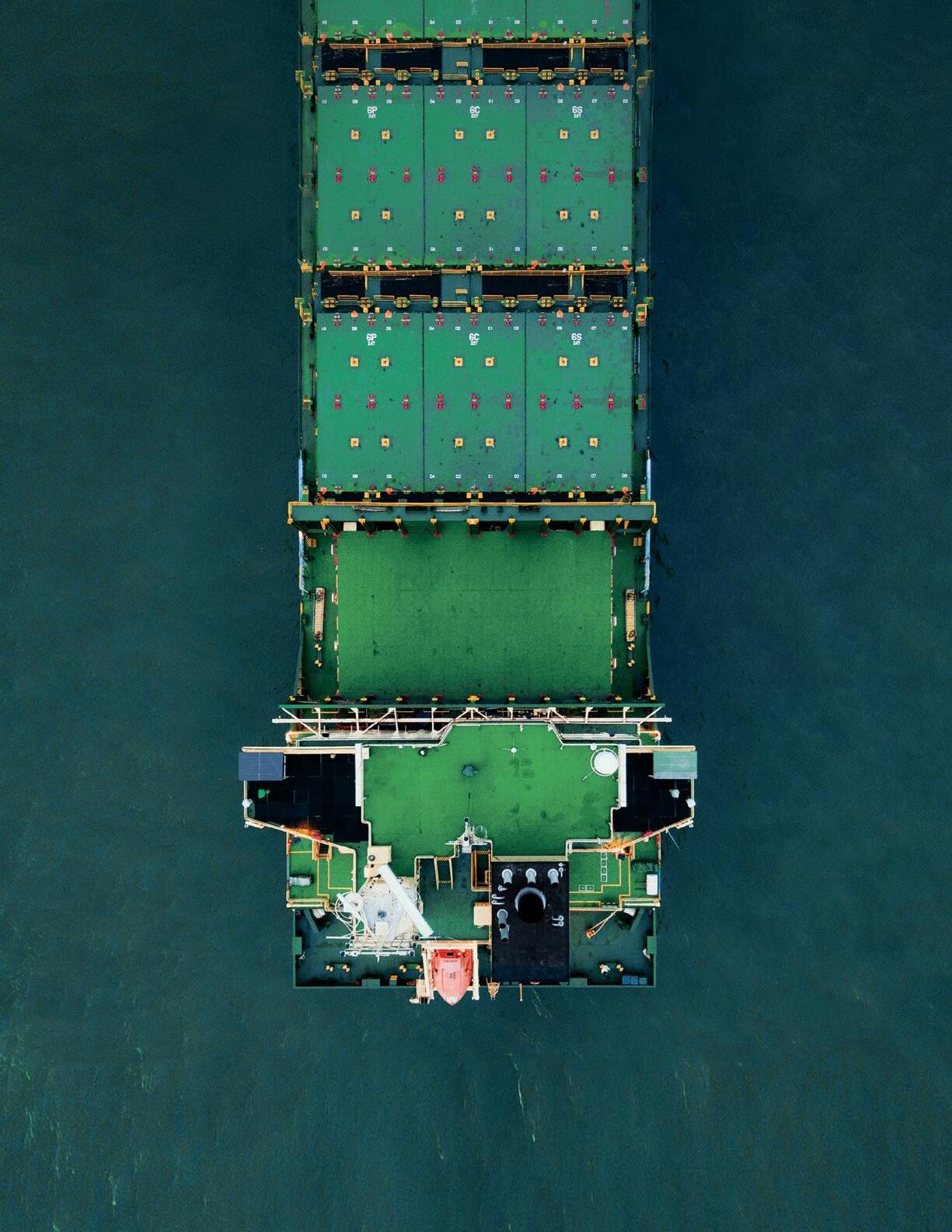
Moving Soy Forward. Moving You Forward.
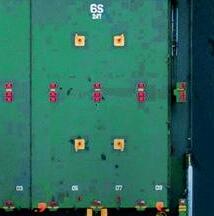
CONVERSATION KITCHEN


Riccardo Tarabelsi is a renowned restaurateur who has made a name for himself in the culinary world with his passion for Italian cuisine. He is the owner of two popular restaurants in downtown Sioux Falls: R Wine Bar and Maribella Ristorante. In a recent cooking show episode, Riccardo shared his business experience, vision for his restaurants, and his philosophy on pairing food and wine.
One of the reasons Riccardo decided to bring Italian cuisine to Sioux Falls was to offer a unique dining experience that combines high-quality food and wine in a relaxed and friendly atmosphere. He works hard to keep the food served at his restaurants as authentically Italian as possible, bringing a touch of his Italian heritage to the Midwest.





Riccardo is also a trained sommelier, a wine steward, who believes that pairing food and wine is an art that requires careful consideration of the flavors, textures, and aromas of both. Riccardo’s knowledge and expertise in pairing food and wine is evident in the extensive wine list at both of his restaurants, which features a variety of wines from different regions of Italy.

28 Summer Issue 2023 SDSL
INVESTING CHECKOFF DOLLARS
Conversation Kitchen, a Hungry for Truth cooking show, pairs our team with talented chefs in the area. Tune in to learn all about how they craft mouth-watering dishes using soy products!
HOMEMADE BERRY LEMONADE POPSICLE
INGREDIENTS
2 cups Lemon Juice fresh squeezed
2 cups Sugar
2 cups Water for boiling
1 gallon Water
Blueberries
Blackberries
INSTRUCTIONS - SIMPLE SYRUP
1. Boil 2 cups of water, add sugar and stir until sugar is dissolved.
2. Remove from heat and set aside.
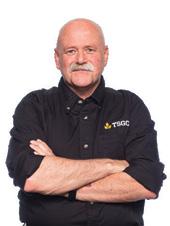
3. Mix simple syrup with fresh squeezed lemon juice.

INSTRUCTIONS - POPSICLES
1. Combine simple syrup with 1 gallon of water. Mix well.
2. Fill popsicle mold with blueberries and blackberries.

3. Pour lemonade into each mold. Place popsicle stick on top.
4. Place into freezer for 24 hours. Enjoy!
Find

Summer Issue 2023 SDSL 29
more recipes at hungryfortruthsd.com
tsgcinc.com for more information.
Vist
GRAIN CONDITIONING
CHECKING YOUR GRAIN BINS HAS NEVER BEEN THIS SIMPLE
Tri-States Grain Conditioning systems will help you remotely monitor your grain, save on energy costs and improve your overall grain storage.
Recently, I was lucky enough to spend a day on the Deinert family-owned and operated cattle farm in Mount Vernon, South Dakota through the Hungry for Truth Ambassador Program. Kevin Deinert, my host, allowed me to experience what a day in the life was like working on a familyowned farm here in South Dakota.
Kevin is a 4th generation farmer. His great-grandfather was living in Seward, Nebraska, and had visited South Dakota when he decided to settle on the land, and Kevin’s family has been farming it ever since.
Along with his father and brother, Kevin farms corn, soybeans, and alfalfa and manages around 1,000 head cattle lot on their 3,000 acres of farmland.
It was really interesting to learn that they create their own cattle feed, consisting of grains and wheat and high-quality alfalfa.
After walking around the farmstead and learning more about their land, Kevin and I jumped in the tractor and drove out to the field to feed some of his cattle. While driving to the cattle we talked about some of the instruments in the tractor and all their functionalities. One of the instruments was a GPS manufactured by a local company in Sioux Falls, where one of his brothers is an engineer. While Kevin and his brother are working in two completely different industries, it was cool to hear about their ties and how they still work together.
HUNGRY FOR TRUTH
AMBASSADOR PAIRING: SOUTH DAKOTA FARMING THROUGH THE LENS OF COREY GROSS


Having open conversations about food and farming with South Dakotans and the farmers who grow it is what we do. In fact, that’s what Hungry for Truth is all about. We had an exciting opportunity to connect local photographer, Corey Gross, with Kevin Deinert, a fourth-generation farmer from Mount Vernon, S.D., to chat about cattle farming, the meaningful work farmers do, and much more. Below, Corey shares his learnings from his farm visit.

30 Summer Issue 2023 SDSL INVESTING CHECKOFF DOLLARS
Once we arrived at the field with the cattle, Kevin let me hop in the driver seat and drive the tractor while feeding the cattle. This was such a cool first-time experience for me and unlike anything I’ve ever done before. Kevin mentioned how just this one field of cattle (of his many) uses around 5,500 pounds of feed twice a day. It’s truly incredible to see the amount of preparation and care that goes into caring for these animals.
Our last (and favorite) stop of the day was to go check on some baby calves. While we were there, there were three baby calves, all of which Kevin mentioned were born within the last day or two. For the calves’ health and safety, they are isolated from the main herd in a separate barn so they can relax, sleep, and of course feed with their mothers. Kevin explained that baby calves typically stand up within the first 30 minutes and feed in the first 1-6 hours of birth. He also shared that it is extremely important for the calves to nurse right away in order to absorb the correct proteins essential to development.
Kevin was beyond gracious for allowing me to join him during his day’s work, and I had such a good time touring the farm and learning about the hard work farmers put in every day. This experience further solidified to me that family-owned farms like The Deinerts are truly one of the pillars of our great state of South Dakota.
To find more Hungry for Truth
Ambassador farm visits, go to hungryfortruthsd.com
Check out our last edition’s Ambassador Pairing where Elaina Lanson of Sioux Falls, S.D. joined farmer Chad Schooley of Castlewood, S.D. to chat about farming, tending to cattle, and what a day on the farm looks like for his family.


Ambassador Program

Connecting and giving real people access to a real South Dakota farm to learn, observe, ask questions, engage with farmers, and see first-hand how South Dakota farming operations go round.


Read all our Ambassador Pairing stories online at hungryfortruthsd.com/ ambassador-program Or scan QR code

Summer Issue 2023 SDSL 31
Chad Schooley and Elaina Lanson at the Schooley Ranch


BETTER YIELDS, BETTER PRACTICES: SIGN UP FOR THE 2023 SOUTH DAKOTA YIELD AND QUALITY CONTEST
The 2023 South Dakota Soybean Yield Contest and Soybean Quality Contest began with the start of planting season; entries will be accepted through 8/31/23.
Each growing season, the South Dakota Checkoff sponsors a Soybean Yield and Quality Contest. Open to any in-state farmer growing soybeans on a minimum of 10 acres, the contest is designed to encourage participants to fine tune practices on their operations and, ultimately, increase both production yield and quality.
SDSU Extension agronomists and field specialists analyze the crop data contributed by contest participants. Their insights are then shared and discussed during South Dakota Soybean’s annual Soy 100 event and other checkoff-sponsored events throughout the year. This gives producers the unique opportunity to take a closer look at localized results of various soybean yield factors, including weather, variety selection, pest management, tillage practices, fertilizer use and more.
RECAPPING LAST YEAR’S RESULTS
Yield contest results in 2022 were strong overall in spite of some weather-related challenges experienced by producers across the state. Dryland fields entered in the contest averaged 65.5 bushels per acre, which was on par with contest results since 2010 but nearly 6 bushels per acre lower than the average yield for the three previous years (2019-2021). For irrigated fields, the average yield was 80.6 bushels per acre. This total outpaced the contest average for the past decade’s worth of data but fell well short of 2021’s record-high 92.9 bushels per acre across all entrants.
The 2022 Masters Class winner was Bob Creasey, an experienced producer who farms near Geddes, South Dakota. His winning variety, Pioneer®️ P28A42X, yielded an average of 99.98 bushels per acre yield on irrigated fields — an impressive total given some of the challenges the 2022 growing season presented. Creasey is no stranger to the leaderboard, having taken top honors in 2020 with an average yield of 118.44 bushels per acre.
“I guess it’s always been a challenge of mine to be able to get a better yield,” says Creasey. “That’s why I participate in the yield contest.”
His operation is located in Charles Mix County near the Missouri River, which provides ample access to irrigation to maximize yields. He also benefits from a lower overall amount of weed pressure than producers further east in the state. However, that’s not to say that he hasn’t had to tinker with production practices and seed selection to maximize yield on his acres.
Creasey works with Jason Schley from Next Level Ag to monitor his crops through tissue sampling and determine how to best manage in-season needs. “It’s all about timing and proportions,” he explains, “and making sure everything across the board is in balance.”
As a dealer for Pioneer, he also taps into local agronomic insights with regard to variety selection. “I rely on my agronomists and account managers to help me get steered in the right direction, what they think will work best for me,” says Creasey.
In addition to Creasey, here are the 2022 South Dakota Soybean Yield and Quality Contest winners within their respective groups and categories:
2022 SOYBEAN YIELD CONTEST (MAIN CLASS):
● Eugene Johnson, Moody County (Group 0, Non-Irrigated; Group 0, No-Till)
● Conrad Waldner, Beadle County (Group 0 or 1, Irrigated)
● Dave Walder, Clark County (Group 1, Non-Irrigated)
● Dennis Jones, Brown County (Group 1, No-Till)
● Jason Waldner, Yankton County (Group 2, Non-Irrigated)
● Raymond Hofer, Hutchinson County (Group 2, No-Till)
● Steve Hagena, Turner County (Group 2 or 3, Irrigated)
● Jon Schaeffer, Turner County (Group 3, Non-Irrigated)
● Jake Wurtz, Charles Mix County (Group 3, No-Till)
2022 SOYBEAN YIELD CONTEST (YOUTH CLASS):
● Jackson Hauglid, Moody County (Group 0 or 1, Non-Irrigated)
● Ledger Burggraff, Minnehaha County (Group 2 or 3, Non-Irrigated)
2022 SOYBEAN QUALITY CONTEST
In the South Dakota Soybean Quality Contest, winners included Toby Johnson, Moody County (Group 0); Samuel Waldner, Beadle County (Group 1, 2); Brian Schmidt, Turner County (Group 3); Ledger Burggraff, Minnehaha County (Group 1 – Youth) and Myles Kokes, Charles Mix County (Group 2 – Youth).
THE 2023 CONTEST IS NOW UNDERWAY
The cost to participate in the South Dakota Soybean Yield and Quality Contest is $25; payment must be received with your entry prior to August 31, 2023. The Youth Class is free to enter and open to producers ages 13 to 21 (producers ages 18 to 21 may choose between the Youth Class and Main Class competitions). A producer must first enter the Soybean Yield Contest in order to participate in the Soybean Quality Contest.
First-place entrants in each group and category receive a $2,000 cash prize; second-place, $1,500; third-place, $1,000. Youth Class winners receive a $250 cash prize. Visit the official Soybean Yield and Quality Contest page for complete rules and to sign up for this year’s competition.
34 Summer Issue 2023 SDSL INVESTING CHECKOFF DOLLARS
ENTER TODAY!
Now’s the time to sign up to enter the 2023 Yield Contest.


Why should you participate? You can win cash prizes of up to $2,000, plus bragging rights all year long! And your data helps us compile best management practices for today and tomorrow.
MASTER CLASS
Previous contest winners recognized for achieving 100 bushel or greater will be automatically placed in the Master Class in all subsequent years.

MAIN CLASS
Entrants 18 years and older not participating in the Youth Class.
YOUTH CLASS
The Youth Class is open to participants age 13-21, with entrants age 18-21 having the option of participating in the Main Class or Youth Class.
Entrant age determined on January 1 of the contest year. (Applicable for Youth Class)
Youth Class 4 Categories: 0-1 Irrigated, 0-1 Non-irrigated, 2-3 Irrigated, 2-3 Non-irrigated
If you have questions call 605.330.9942 or visit www.sdsoybean.org.
Sponsored by
Managed by
ENTRY FORM DUE AUGUST 31
HOW ARE SOYBEAN PRODUCTION AND SUSTAINABILITY ALIGNED IN SOUTH DAKOTA?

South Dakota soybean producers are positioned perfectly to capitalize on the increasing demand for climate-friendly practices and solutions.

36 Summer Issue 2023 SDSL INVESTING CHECKOFF DOLLARS
The entire agricultural industry has faced increased pressure in recent years to farm in sustainable ways that benefit the earth and its natural resources — all while producing more against tight margins. Fortunately, soybean producers in South Dakota are positioned perfectly to address some of these mounting challenges proactively.
CLIMATE-FRIENDLY PRACTICES IN SOYBEAN PRODUCTION
Soybean production has made substantial gains in terms of sustainability over the past four decades. As reported in the 2021 U.S. Soy Sustainability Overview, American soybean farmers improved their per bushel greenhouse gas (GHG) emissions by 43 percent since 1980. During this time frame, they also increased production by 130 percent, using roughly the same amount of land while doubling down on water and energy use.
Checkoff-funded research into soil management practices, precision technology and more has helped pave the way for these improved efficiencies in soybean production. That, in turn, has dramatically benefited producers and bolstered demand for sustainably-grown U.S. soybeans on the international market.
Jamie Johnson runs a no-till row crop operation and raises Angus beef cattle with her husband, Brian, outside of Frankfort, South Dakota. In addition to no-till farming, the Johnsons utilize cover crops and grazing practices in their soil management strategy. “We see so much value on our operation from doing conservation practices,” says Johnson, who represents District 7 on the South Dakota Soybean Association Board of Directors.
Johnson explains that soybeans fit into various rotation lineups and work well with cover crops to lay a solid foundation for improved soil management practices. They also work with bacteria to fix nitrogen in the soil, reducing farmers’ dependency on commercial N fertilizer.
When talking to other farmers about soil health and its importance to sustainable production, she likens the earth to the human body. “You don’t want to eat the same thing over and over again,” says Johnson. “And the same thing with your soil, you know, having that diverse rotation and different things growing in your soil makes it healthier.”
SUSTAINABILITY THROUGH SOY-BASED INNOVATION

The soybean sustainability narrative continues far beyond harvest. A rapidly growing portfolio of soy-based products — from biofuels like biodiesel, renewable
diesel and sustainable aviation fuel (SAF) to road sealants to rubber tires and shoe soles — have taken center stage in the ongoing efforts to reduce our societal dependence on fossil fuels.
“Anything ‘green’ is being looked at as the future,” says Jason Frerichs, who farms in the northeast corner of the state near Wilmot, South Dakota. A former state legislator, Frerichs now serves as District 8 Director and Chairman for the South Dakota Soybean Research and Promotion Council. In his mind, the environmental benefits presented by soy-based products are and will continue to be a boon to South Dakota soybean farmers. “There’s so much untapped potential, especially as we see the shift away from petroleum,” he says.
South Dakota soybean farmers have helped accelerate innovation through their checkoff, funding research and promotion efforts for several products hitting the market in recent years. In addition, the POET Bioproducts Institute — in collaboration with South Dakota State University and South Dakota School of Mines — is scheduled to open this year thanks in part to checkoff-funded support.
“We all need to come together (to explore new uses for soybeans), and that’s what we see with the POET Bioproducts Institute,” says Frerichs. “(It) will hopefully be the go-to place to make sure that new uses for soybean products are discovered. But it doesn’t just stay there — they can then use their shop space to partner with private industry to make sure those products get out to the consumer market.”
Frerichs says this outcome will further reinforce soybean producers’ role in a more sustainable future. “We want to make sure that soybean farmers are able to be successful, make money out there, and obviously be sustainable on the land and take pride in those soybeans that we raise,” he says.
LEARN MORE ABOUT SUSTAINABILITY AND SOUTH DAKOTA SOYBEAN
For soybean farmers, sustainable practices aren’t just a passing trend. In many cases, they have been in place for generations and will continue to be at the forefront as we work to advance our industry while preserving the earth and its natural resources. To learn more about South Dakota Soybean and its efforts to support farmers in their continued pursuit of sustainable practices and product innovation, please visit:
www.sdsoybean.org or talk to your local district director.
Summer Issue 2023 SDSL 37
U.S. SOYBEAN EXPORTS SET RECORDS DESPITE GLOBAL ISSUES

Soybean exports from the United States have been impressive. U.S. Soybean Export Council CEO Jim Sutter cites an all-time record in terms of the value of soybeans exported. The marketing year was the second highest in terms of soybean volume exported. That amounts to almost 72 million metric tons of soybeans worth $40 billion being shipped to foreign soybean customers.
“We were quite fearful that with the pandemic situation and with the economic issues, the Ukraine conflict, that we wouldn’t see that kind of demand, but it held up well,” said Sutter, in an interview during the 2023 Commodity Classic in Orlando, Florida. “We were pleasantly surprised, I think, with the way that demand held up. And also, I have the say, that there was a little bit lower crop in South America, so the U.S. was there to fill that void.”
Sutter is encouraged by soybean export demand, specifically in China, which is importing more from the U.S. than it did last year. But what he characterizes as clouds on the horizon are gathering over developing markets, such as Egypt, Pakistan, and Bangladesh. “Those kinds of markets that are in their early stage are what we call emerging markets because the economies are just kind of ramping up; people are starting to consume more protein,” he said. “But those countries are all being impacted by the strength of the dollar, which makes things more expensive in their local currency, and also those particular countries are having a little bit of economic trouble, so they have more expensive prices in their local currency at a time when they don’t have strong economic conditions in the country.
Regarding soybased renewable diesel and other
soy-based renewable fuels, Sutter says they affect the production of and demand for soy protein.

“We’re excited to have more meal from the U.S. to be able to export and people say, ‘well, where will it go? Do you have markets for that?’ And I think we’ve got great markets, in Europe, in North Asia, Japan, Korea, Southeast Asia, the Americas,” said Sutter. “But I just want people to know that that’s something we’re watching very carefully and working with our teams around the world, working with the people that are going to be producing that meal and the customers around the world, to make sure that as more crush comes on in the U.S. as there’s more meal to export, we have markets where that will go.”
There’s more conversation with Jim Sutter on The Soybean Pod, available wherever you get your podcasts and at www.sdsoybean.org
38 Summer Issue 2023 SDSL
INVESTING CHECKOFF DOLLARS
JIM SUTTER U.S. Soybean Export Council CEO
ON A MISSION: HOW TRADE VISITS IMPACT DEMAND FOR U.S. SOYBEANS
There’s no downplaying the significant role exports play for U.S. soybean farmers. The USDA reported that the United States exported a record $24.7 billion in soybeans in 2021, which was 7 percent higher than the previous year.
And while sales to China have rebounded in recent years, new and emerging markets have pushed U.S. soybean sales to record-high levels. In 2021, sales to Mexico increased by a whopping 42 percent year-over-year (YOY). Three other countries among the top 10 export markets for U.S. soybeans — Japan, Indonesia and Taiwan — posted YOY increases of 27, 22 and 21 percent, respectively.
SOYBEAN CHECKOFF INVESTS IN TRADE RELATIONSHIPS
Leaders at South Dakota Soybean Research and Promotion Council are keenly aware of the impact exports have on profitability for South Dakota farmers.
“Over 60 percent of U.S. soybeans are exported,” says Dawn Scheier, who farms near Salem, South Dakota, and serves as District 3 Director. “That is why it is important that we make sure we’re having good communication with our customers around the world.”
One of the things driving global demand for soybeans is increased meat consumption as incomes rise in developing nations. More livestock production calls for more high-quality, protein-rich feed, and soybean meal has built a strong reputation in this regard.
Another driver is the rise of biofuels — including biodiesel, renewable diesel and sustainable aviation fuel (SAF) — as the market explores more environmentally responsible alternatives for our transportation and energy needs.
Scheier is a firm believer in the benefits of trade tours sponsored by state and national soybean checkoff organizations and the opportunity they create for U.S. farmers to assert the value of their product.
She has participated in trade visits with the South Dakota Soybean Research and Promotion Council as well as through her role with World Initiative for Soy in Human Health (WISHH) over the past decade.
These tours typically offer U.S. farmers the opportunity to visit with key stakeholders abroad in countries that have been identified as either new or emerging markets. Meeting participants include grain buyers and traders, executives from processing plants and feed mills, and major players in the livestock and biofuels sectors. Together, they discuss topics like on-farm practices and soybean quality as well as how soybeans are used across particular industries in that country.
Conversely, trade visits can also bring some of these international stakeholders to the U.S. to learn more about soybean production firsthand.
“I still talk to people from past trade visits,” says Scheier, who attended a U.S.-hosted trade tour last fall in the Upper Midwest

featuring visitors from three different continents. “You’re building relationships. Building relationships really helps to build trust.” And with that trust, of course, comes the increased likelihood that international trade partners will look to the U.S. when purchasing soybeans.
GROWING DEMAND FOR SUSTAINABILITY
One of the most important issues that comes up during soybean trade visits is that of sustainability; there is both growing consumer demand and increased governmental regulation around environmentally responsible on-farm practices.
From Scheier’s point of view, this creates a unique opportunity for U.S. soybean producers. In an international playing field where U.S. soybean growers must compete with the likes of Brazil and Argentina, being able to assert our own sustainable practices with potential buyers is paramount.
“We’re doing a lot of practices that are really good for the environment: precision farming, no-till and min-till cover crops,” says Scheier.
She also notes that soybeans are a sustainable product in and of themselves, with benefits ranging from carbon capture and nitrogen fixation to new uses that have the potential to replace petroleumbased products.
“We’re able to show that we can feed the world by being good stewards of the ground that we farm,” says Scheier. “That’s why we’re a good source.”
LOOKING AHEAD TO NEW MARKETS
Now that COVID-19 concerns have subsided some and international travel is back on the rise, trade tours are back at the forefront of these relationship-building efforts.
China, which imported 96.52 million metric tons of soybeans in 2021, obviously continues to loom large as the dominant export market. But it is also clear that many other countries are emerging as growing markets for U.S. soybeans.
With this in mind, South Dakota Soybean Research and Promotion Council remains focused on building relationships with these key players in the Middle East and North Africa, South and Southeast Asia, the European Union and elsewhere.
In fact, a checkoff-sponsored delegation headed to Morocco as this issue of Soybean Leader was being published. Stay tuned for reflections on that trade tour and its importance to South Dakota farmers at sdsoybean.org
“We want to make sure we have good, diverse markets for the U.S. farmer,” says Scheier. “It’s a long-term investment.”
Summer Issue 2023 SDSL 39
THE FUTURE OF ROOF REJUVENATION: SOY BIO-OIL
By Real Leaders
Mike and Todd Feazel spent 25 years growing one of the largest and most successful roofing companies in the United States.

As time passed, it became apparent that shingles were changing. The amount of shingles per bundle increased, which meant individual shingles were lighter and less durable. The brothers witnessed roofs failing at astounding rates. In many cases, a “30year roof” lasted less than half its promised life. Mike and Todd didn’t like what this decline in quality meant for homeowners across the country. Add that to a massive increase in costs of labor and materials, as well as home insurance complications, and a grim picture emerges.
The connection between early roof failure and its negative environmental impact also becomes apparent. They found that if 1% of homes applied this treatment instead of installing a new roof, It could eliminate 2.8 million tons of landfill waste and 1.1 million metric tons of CO2 emissions. (Vasco-Correa/Shah “Technical, economic and environmental performance of soy methyl ester emulsions applied to aging asphalt roofing.” CFAES, Ohio State University.)

Discovering new advancements in plant-based chemistry, they sold Feazel Roofing and partnered with the largest research and development laboratory in the country to develop Roof Maxx roof rejuvenation. After extensive testing, 17-year-old shingles treated with Roof Maxx passed the same tests required of brand-new shingles. (Study conducted by Ohio State University.)
Untreated, today’s shingles quickly become brittle, leading to loss of granules, cracking, and breaking. This spray-on treatment penetrates the shingle replacing lost oils, and reverses aging. The treated shingles now act more like new shingles, expanding and contracting as they should. This improves their ability to hold the protective granules onto the shingle. In many cases, the shingle’s dried glue tabs are reactivated. This helps to keep shingles from breaking and minimizes blow-offs in high winds.
Roof Maxx had developed a product that was needed in the marketplace and a sustainable way to create that product. They also
40 Summer Issue 2023 SDSL
INVESTING CHECKOFF DOLLARS
When considering options to maximize the longevity of a rental property, Bonnie and Craig Dybedahl looked to soy. Soy-based roof preservative by Roof Maxx was applied to a home near Colton, S.D.
Brothers Mike and Todd Feazel, founders of Roof Maxx
“My brother and I could see the staggering number of roofs at risk across the country and wanted to do something about it.”
– Mike Feazel.
needed an innovative way to deliver the product to those who could benefit. Roof Maxx decided to make its product available through a dealership model and granted hundreds of independent dealerships to sustainability-minded entrepreneurs across the country over a few short months.
Each dealership can be as small as one person or as large as an existing roofing company that wants to offer cost-effective and environmentally friendly alternatives for its customers. A Roof Maxx dealership is a unique offering with high returns on a small investment. Dealers need little training and few tools and can be up and running in as few as six weeks. Even those without roofing or construction experience can maintain an exciting, successful, and growing business. After start-up costs of equipment and branding, all a dealer pays for is the product itself. Roof Maxx corporate even provides inexpensive leads gathered from national marketing opportunities.
“We have several roofing companies who have added Roof Maxx because they know it is a real science-based product, and they’ve seen it save roofs. Being the roofing company that only replaces a roof if it absolutely needs to be replaced builds lifelong customers,” says Mike Feazel. As a dealership/ small-business opportunity, Roof Maxx has proven itself to be recession-proof. Dealerships were born and grew during an international pandemic and its economic aftermath. Roof Maxx’s robust nature also has a clear benefit for consumers needing to
delay large, expensive projects like re-roofs during difficult times.
Roof Maxx dealers are entrepreneurs like the American Farmer who grows the raw material for the Roof Maxx formula. They are also innovators like Henry Ford and George Washington Carver who worked together to invent synthesized rubber from soybeans, among other advanced products. When you fast forward the better part of a century, soy technology is even used to make Goodyear Tires. Roof Maxx is partnered with the Ohio Soybean Council and Airable Labs which works tirelessly to adapt this renewable resource to revolutionary products across the board.
“Roof Maxx not only provides a green solution to a petroleum-based challenge of losing petroleum oils from a shingle but also can be as low as 20% of the costs of replacing an old roof,” says Barry McGraw, Director of Product Development and Commercialization, Ohio Soybean Council.

Roof Maxx is a win-win-win for dealers and customers. It’s a renewable product that reduces construction waste AND saves homeowners money while protecting their homes. Dealers get to make a meaningful impact on their community and the environment while growing a successful business. roofmaxx.com
•
•
soyleic.com

Summer Issue 2023 SDSL 41
When the world relies on you for healthy food choices, rely on SOYLEIC ®
SOYLEIC® is a non-GMO, high-oleic option for today’s soybean farmers — and those they serve.
• Maturity Groups for Your Area
Competitive Yields
Added Value for Culinary and Livestock Markets
(573) 635-3819 734 S. Country Club Drive Jefferson City, MO 65109
That means the future of a healthier food system isn’t manufactured — it’s grown. See why soybean farmers are embracing SOYLEIC®
SD CHECKOFF COUNCIL CO-SPONSORS ANNUAL TRANSPORTATION CONFERENCE



42 Summer Issue 2023 SDSL
INVESTING CHECKOFF DOLLARS
Agriculture Transportation Coalition Executive Director Peter Friedmann, Commissioner
Max Vekich of the Federal Maritime Commission and SSGA Executive Director Eric Wenberg.
Maria Bodnar of Ocean Network Express discussed modernization and improvements to the shipping industry at Transportation Go!
More than 120 people in the logistics and transportation industry attended SSGA’s Transportation Go! March 15-16 in Omaha, Neb.
Oftentimes, it’s easy to overlook how complex the world matrix is when it comes to sending soybeans to different parts of the world. With commodity beans, it might be as easy as taking a load to the elevator and then not thinking too much about the journey those little soybeans are about to take.
Thankfully for South Dakota soybean farmers, the Specialty Soya and Grains Alliance (SSGA) is actively involved in discussions exploring those complex issues. SSGA brought the industry together with its annual Transportation Go! conference in March.
“Transportation Go! is a recipe for success, because it asks the corn, soybean, wheat, beef and pork industries to come together at a single place to talk about what their transportation logistics issues are for intermodal and units to use rail and access international markets,” said Eric Wenberg, executive director for SSGA, which hosted the transportation and logistics industry in Omaha, Neb., to dig into some of the industry’s biggest challenges.
The South Dakota Soybean Research & Promotion Council co-sponsored the conference. Director Todd Hanten, from Goodwin, S.D., attended the two-day conference on behalf of the Council.
“Transportation Go! had a great lineup of speakers and a full room of engaged transportation and ag industry individuals. We covered everything from container shipping and rail to trucking, Hanten said. “SSGA has some great connections with the right people and the transportation commissioners.”
The lineup of speakers covered a wide range of topics including:
Economic and supply chain issues
Rail freight and economics update
Hiring, developing and retaining talent in ag logistics
Container ocean shipping — a port’s perspective
Untapped potential of the Missouri River
Great Lakes St. Lawrence Seaway’s growth
Finding solutions from rail to sea
Top issues facing trucking
Thursday morning, the group was addressed by Max Vekich of the Federal Maritime Commission. Vekich talked about struggles with container shipping and also some of the obstacles companies are facing in moving products across the globe.
“The transportation system isn’t really a system,” Wenberg said. “It’s more of a way we have to actively ask these transportation and logistics professionals to work together. Transportation is not seamless. As we’ve heard at this conference, there are obstacles in every transaction, sometimes insurmountable, but that there is relief on the way with the Federal Maritime Commission’s upcoming demurrage rule, which is going to provide relief we’ve sought for a long time.”
A year ago, the St. Lawrence Seaway dominated discussion at Transportation Go!
From that event, 200 containers of Chippewa Valley Bean kidney beans left the Port of DuluthSuperior bound for Europe, a historic shipment that made plenty of news.
“Transportation Go! is about finding that success, about having people undertake that dialogue that will lead to better transportation from the central states,” Wenberg said.

SOY TOPICS
PROGRAMS & EVENTS

NEWS & MEDIA
LEGISLATION AND MUCH MORE
Summer Issue 2023 SDSL
ALWAYS JUST A CLICK AWAY FROM THE LATEST SOY RELATED NEWS AND UPDATES. STAY UP TO DATE WITH US AT: SDSOYBEAN.ORG
INAUGURATION CEREMONY OF CHINA-U.S. SOY VALUE CHAIN INNOVATION CENTER & THE FIRST TRAINING COURSE TAKEN PLACE IN ZHENGZHOU, HENAN


The Inauguration Ceremony of China-U.S. Soy Value Chain Innovation Center was held on April 12th in Zhengzhou, Henan province, China. Zhou Ji, Deputy Party Secretary of Henan Provincial Party Committee, Dawn Scheier, Board Secretary of U.S. Soybean Export Council (USSEC), Jim Sutter, Chief Executive Officer of USSEC, Zhang Xiaoping, Greater China Regional Director of USSEC, Jing Quan, Minister of Chinese Embassy in Washington, DC (virtually join), Robert Hanson, Minister Counselor of Agricultural Affairs, U.S. Embassy in Beijing, Melissa Lan, Consul General of U.S. Consulate General in Wuhan, Liu Zhijun, Party Secretary of Henan University of Technology, and other guests from China and U.S. attended the ceremony and delivered speeches.

44 Summer Issue 2023 SDSL
INVESTING CHECKOFF DOLLARS
Zhou Ji says, Henan is keeping in mind General Secretary Xi Jinping’s entrustment, anchoring the “two guarantees”, implementing the “Ten Strategies” in depth, highlighting the strategy of innovation-driven, science and education, and talent development, accelerating the construction of a strong agricultural province, and deepening the institutional open-up and strive to promote the practice of Chinese-style modernization in Henan. The U.S. is Henan’s largest trading partner, with soybean association members Cargill and ADM investing in the province already. The cooperation between the US Soybean Export Council and Henan to establish the innovation centre is a major event to promote in-depth cooperation between the two parties and achieve mutual benefits and win-win development. It will effectively promote the exchanges and cooperation between the two sides in the whole soybean value chain and help the high-quality development of the soybean industry between China and the U.S.
Dawn Scheier says, it is an honor to attend the Inauguration Ceremony, not only representing the USSEC Board of Directors, but also on behalf of the 300,000 U.S. Soy family farmers. The support of U.S. Soy customers in China is greatly valued. Innovation is a hallmark of U.S. Soy. We continually strive to improve on-farm practices, adopting precision agricultural technology to reduce the use of inputs and implementing conservation practices. By 2025, we should be able to increase yield by another 10%, reduce soil erosion by 25% and reduce greenhouse gas emissions by 10% by improving the continued adoption of no-till, conservation tillage, narrow rows and use of cover crops. We believe such on-farm innovation practices will benefit China’s innovation-driven and quality-oriented economic development.
Jim Sutter says, during the 40 years in China, we have developed an incredibly successful and mutually beneficial relationship with the Chinese agriculture industry. China has become the No. 1 international customer of U.S. Soy, capturing a 60% market share of globally traded soy. The current polycrisis

has made our goals into sharper focus: to collectively nourish our communities in the most responsible and sustainable way; and together we innovate and transform global nutrition, provide climate-forward solutions, and support progress for people and communities around the world. The establishment of the Innovation Center is a successful result of our cooperation. It will continue to bring innovative research & technology, and talent development to industry professionals and is committed to serving as a strong ballast for long-term trade relations between the U.S. and China.
Zhou Ji and Dawn Scheier jointly inaugurated the ChinaU.S. Soy Value Chain Innovation Center. The leaders of Henan Provincial Foreign Affairs Office, Shangqiu City, Henan University of Technology and the experts and students of the first training course of innovation center, and representatives of enterprises in Henan province attended this ceremony.

The first training course of innovation center officially started after the ceremony. The participants had a lively interaction with the U.S. farmer leader and USSEC leaders, exchanging views on prospects for China-U.S. industrial developments. Zhang Xiaoping, Greater China Regional Director of USSEC, presented the research on Global Soybean Supply & Demand Outlook.
The first Livestock, Poultry and Feed Technical Training lasts for three days, with the theme of Low Carbon and HighEfficient Utilization Technologies of Soybean Products and Other Protein Feeds. Nearly 60 students are academic professors and representatives of leading enterprises from industry nationwide.
The China-U.S. Soy Value Chain Innovation Center will further explore the application value of soybean products, display and promote the innovation results of soybean application through innovative technology training and industrial practice, improving the economic and social benefits of the whole soybean value chain, and thus contribute to the high-quality development of China’s economy.
Summer Issue 2023 SDSL 45
A RESEARCH PROGRAM FOCUSES ON NORTHERN-GROWN SOYBEANS

Aresearch organization specializing in production issues specific to northerlygrown soybeans results in wise and efficient spending of checkoff research funds. That’s according to Heather Beaner, a South Dakota Soybean Research and Promotion Council (SDSRPC)l director and a representative on the North Central Soybean Research Program (NCSRP) Board. The NCSRP, says Beaner, invests checkoff dollars from 13 states into soybean production research.
“It’s a way that we have different states not duplicate research,” said Beaner, “and we get these big major projects, we get our biggest bang for the research buck.”
The projects funded by NCSRP benefit growers in the bulk of the 13 member states, according to Beaner. “One of the larger projects that NCSRP has funded is the soybean cyst nematode project, which of course, soybean cyst nematode is a major
problem across the United States now. “We do research into things like white mold problems in the northern U.S. and soybean gall midge in those areas of the country that have it,” said Beaner, who farms at Mellette, in northern South Dakota. “We’ll look into things like herbicide effectiveness and fungicide effectiveness. We’ve even done research into plant genealogy, but whatever project we support needs to have a large impact across a number of soybeangrowing states.”
As a SDSRPC board director, Beaner was encouraged to represent the state’s growers on the NCSRP board, however, it took time and involvement on the NCSRP board to pique her fascination with soybean production research. “I didn’t have any specific interest in research when I started, but as my time on the board has gone on it’s really been interesting to see what these researchers can come up with that are new and innovative in
ways that we can enhance production in the soybean realm. Where I’m from, we have issues in the northern part of South Dakota that we deal with. White mold has really become prevalent, and soybean cyst nematode is out there,” she said. “We’re always looking for ways to enhance the way we grow soybeans in a way that we don’t waste our time, we don’t waste our inputs; we don’t waste our money. Soybean research really helps in that area.”
Any research application that conserves crop inputs is money in a producer’s pocket. Beaner like most growers thinks especially hard about inputs, what they cost, and how they can most efficiently be put to work. “Personally, I’m making more informed decisions on what inputs I buy, from whom I buy them, and make sure that when I apply them, I’m applying them in a smart way,” said Beaner. “That means I don’t have to use more than necessary.”
46 Summer Issue 2023 SDSL
INVESTING CHECKOFF DOLLARS
Heather Beaner
WHY MEMBERSHIP MATTERS
In an industry that is seeing more and more scrutiny from consumers and competitors, isn’t it great to know there is an organization that is constantly involved in the policy that affects soybean farmers? The South Dakota Soybean Association has a seat at the table when policymakers at the state and national level discuss topics vital to our right to farm.
Since I became a member and got involved with the Soybean Association a few years ago, my appreciation for the organization and the work that they do has grown tremendously. I have seen firsthand the respect that policymakers give to this group because they know that we represent a vast array of soybean farmers from across the state. It is impressive to see legislators reach out to us and ask what our stance is on a specific topic because they want to have the support of this group. However, it’s important to keep in mind that individual members make up the organization. By using the platform of the collective number of Association members, any single member can have their voice be heard. In my opinion, that is the greatest value of joining the South Dakota Soybean Association.
To participate in these important lobbying efforts, we would like your support in our mission to improve the lives of soybean farmers across South Dakota. The Soybean Association is partly funded by membership dues that make it possible to attend legislative gatherings, help draft legislation, and meet with our elected officials in Washington, D.C. and Pierre. By becoming a member, you help us not only financially, but you help our collective voice carry more weight when legislators see that we have a larger number of individuals supporting our cause. In addition to the benefits I have mentioned above, added member benefits can be found on the SDSoybean.org website.
We would greatly appreciate you joining our cause to help soybean farmers across the state be more profitable and protect our right to farm. Thank you for your consideration, and feel free to contact the office or an association board member to answer any questions you may have about joining this great organization!
 Brent Greenway Treasurer and District 1 Representative South Dakota Soybean Association
Brent Greenway Treasurer and District 1 Representative South Dakota Soybean Association

Summer Issue 2023 SDSL 47 INTERESTED IN BECOMING A MEMBER? VISIT SDSOYBEAN.ORG FOR A FULL LIST OF MEMBERSHIP BENEFITS OR CALL OUR OFFICE AT (605) 330-9942 .
BRENT GREENWAY Treasurer and District 1 Representative
Brent Greenway
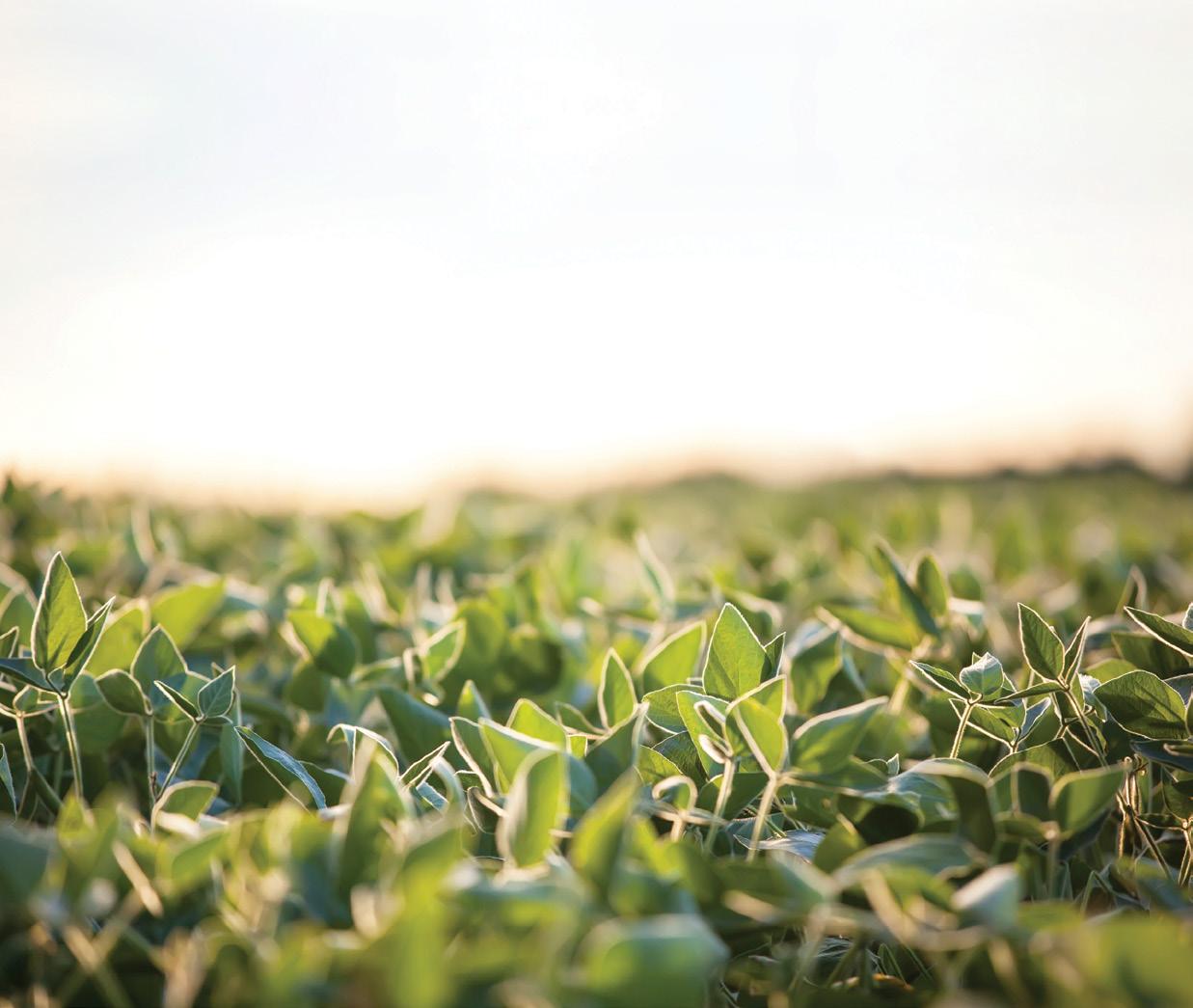












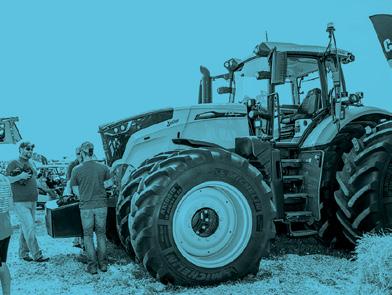




















48 Summer Issue 2023 SDSL ◾ 400+ ag exhibits with the latest equipment ◾ BioZyme Livestock Tent featuring demos and education ◾ Networking Lounge with live entertainment ◾ Educational sessions ◾ Food, fun, and family activities AUGUST 15 – 17 , 2023 | 9 AM– 4 PM MITCHELL, SOUTH DAKOTA Creating Connections in AG Create Connections with the Best in Midwest Agriculture! 2023 2023 DAKOTAFEST SPONSORS Get your tickets today! Go to Dakotafest.com or scan the QR code. Use promo code SOYBEAN23 at checkout for additional $2 off $7 online ticket price. Tickets $ 5 Dakotafest.com #Dakotafest23

















 By Jerry Schmitz,
Director
By Jerry Schmitz,
Director



















 By Kurt Lawton
By Kurt Lawton







































































 Brent Greenway Treasurer and District 1 Representative South Dakota Soybean Association
Brent Greenway Treasurer and District 1 Representative South Dakota Soybean Association



























